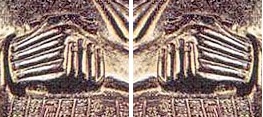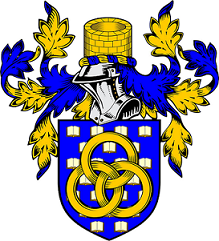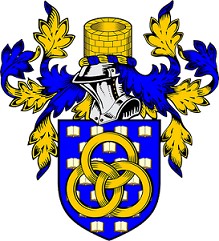
Which Image is Right?
Well unless you read cuneiform characters or at least could recognize the composite symbols you just would not know which of the two images of the seated Mesopotamian architect in the photograph is correct. Many times, books will have images that are mirror images rather than the actual images of the artifact.
If you examine the image of the two seated man you will notice something is not right.
Do you see it?
No?
Okay, try to match the figurines posture and hand placement.
Are you having problems?
You can’t do it. Why? Because you’re not built that way.
Notice that the Architect in the image has two left hands while in the second image has two right hands.
Hands represent actions as seen in Proverbs 6:10, “Yet a little sleep, a little slumber, a little folding of the hands to sleep:” or Proverbs 12:14, “A man shall be satisfied with good by the fruit of his mouth: and the recompence of a man’s hands shall be rendered unto him.” or Proverbs 31:16, “She considereth a field, and buyeth it: with the fruit of her hands she planteth a vineyard.”
The greatest is Matthew 6:3, “But when thou doest alms, let not thy left hand know what thy right hand doeth:”
In the ancient cultures of the east the right hand is the hand of spiritual blessing and benevolence while the left hand represents worldly and malevolence. The real image of the artifact has two right hands not two left hands.
So as attested to, in whom this statue honors, this Mesopotamian man’s malevolence was equal to his benevolence. His worldly actions where just as righteous as his spiritual actions.
In Proverbs 3:16, “Length of days is in her right hand; and in her left hand riches and honour.” The best that you will receive from walking in wisdom is length of days and the worst that you will receive is riches and honor.

So if I ask you to give me a hand which would you give me?
R.Frank Tulak, S.R.E.


TriciaMon Nov 04, 2019 at 2:17 pm
Great article, makes allot of sense. In the East, even today, people do not touch others with their left hand only the right. Also in eating, it’s not proper etiquette to put your left hand on the table. So many traditions that we blindly follow without understanding where they came from or what they mean.